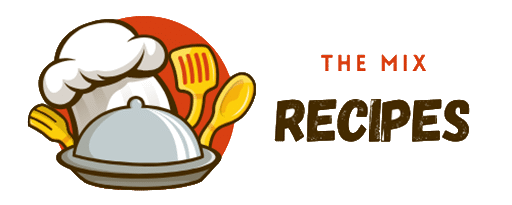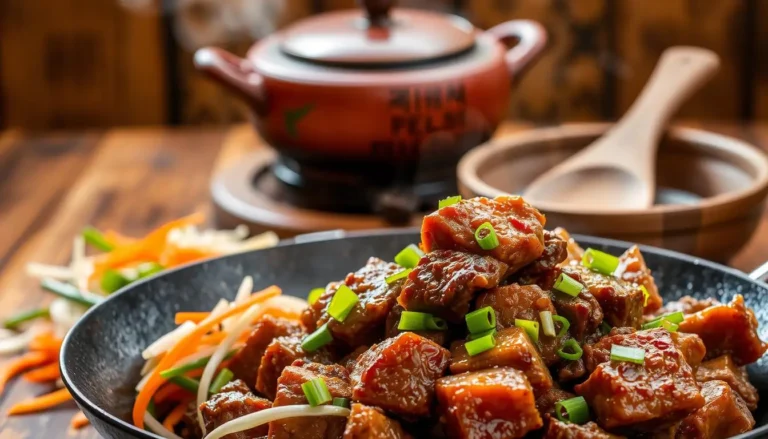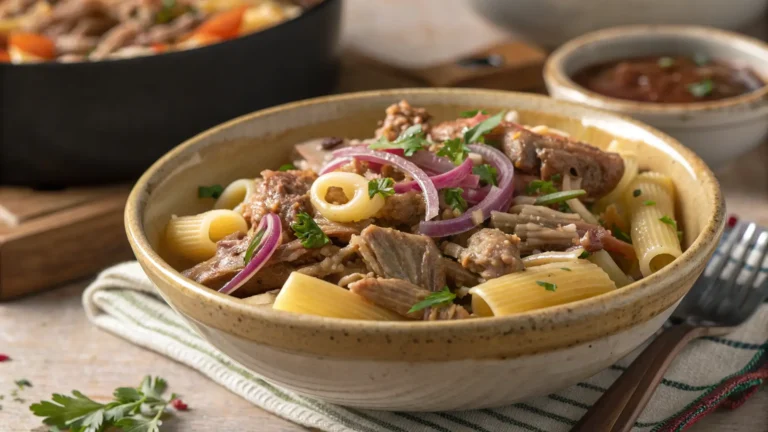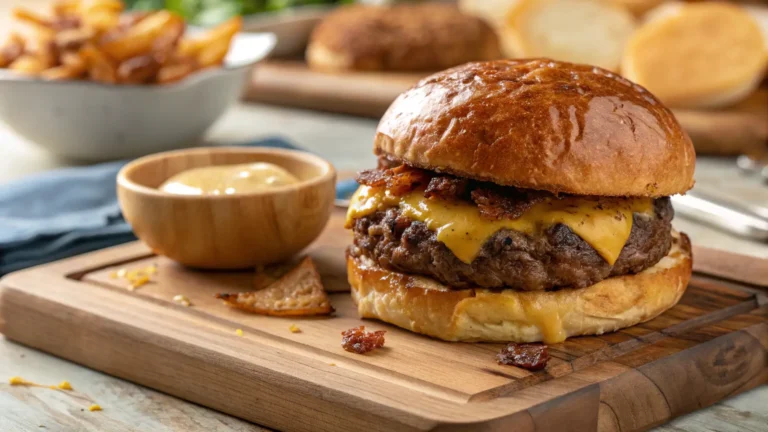Chuck Roast Recipes: The Best 7 Melt-in-Your-Mouth Meals You Must Try
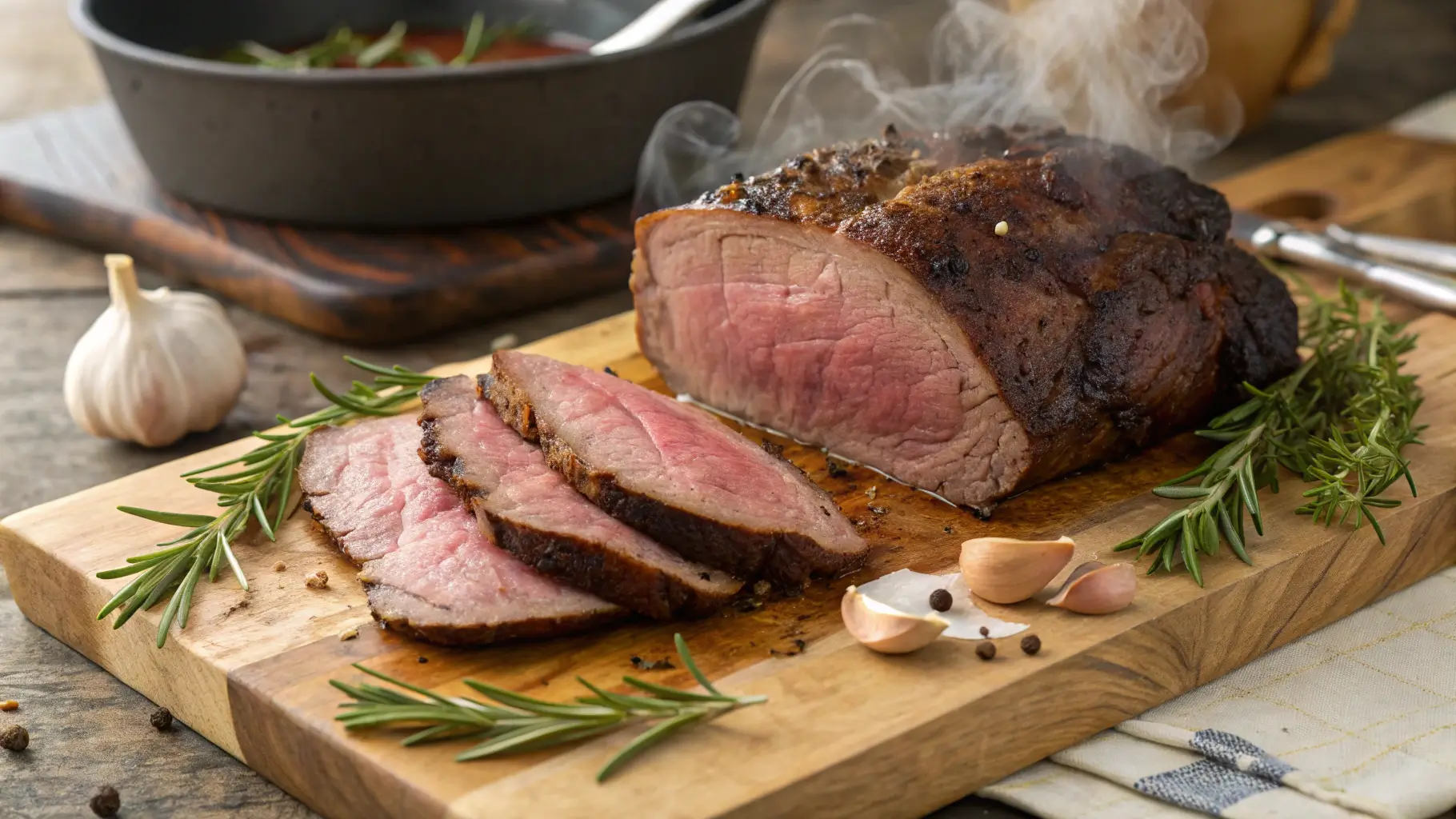
Table of Contents
Chuck roast recipes are the answer when you need something hearty, flavorful, and truly satisfying. Whether you’re feeding a crowd, prepping meals for the week, or craving something cozy for dinner, these recipes deliver unbeatable tenderness and rich flavor in every bite.
This guide will walk you through how to cook chuck roast like a pro — from choosing the best cooking method to flavor-boosting tricks you’ll want to use every time. We’ll cover everything: oven vs. crockpot methods, whether to sear first, how long to cook it, and delicious ideas for using leftovers.
Understanding Chuck Roast: The Basics
What is a Chuck Roast?
Chuck roast comes from the shoulder section of the cow. It’s known for its deep marbling, bold beefy flavor, and the ability to become incredibly tender when cooked properly. Many chuck roast recipes take advantage of this by using slow, moist-heat cooking techniques that break down the connective tissue and bring out the best in this cut.
You might also see chuck roast labeled as shoulder roast, blade roast, or even pot roast in stores. All of these are essentially the same cut — perfect for recipes that reward time and patience.
Why Choose Chuck Roast Over Other Cuts?
There are several reasons chuck roast recipes are more popular than dishes made with leaner cuts like top round or sirloin:
- Superior flavor thanks to its natural fat content
- Ideal for long cook times, which means more tender results
- Incredible versatility, from pot roast to shredded beef sandwiches
- Affordable, making it great for feeding families or hosting
- Excellent for batch cooking, as it reheats and stores well
Chuck roast performs best when it’s braised, roasted, or slow-cooked. That’s why many of the best chuck roast recipes feature cooking methods like crockpots, Dutch ovens, or even Instant Pots — all of which maximize tenderness and flavor.
Discover great ideas like Vietnamese Shaking Beef (Bò Lúc Lắc) — while not a chuck roast, it highlights another way to make beef dishes bold and tender.
What is Chuck Roast Best For? Cooking Styles & Occasions
Ideal Dishes Made from Chuck Roast
One of the greatest strengths of chuck roast recipes is their flexibility. This flavorful cut of beef can be transformed into a wide range of comforting, satisfying meals. From family dinners to holiday mains, chuck roast is always up to the task.
Here are some top uses for chuck roast:
- Classic Pot Roast: A slow-cooked favorite with carrots, potatoes, and rich gravy.
- Beef Stew: Cubed chuck roast simmered in broth with vegetables and herbs.
- Birria Tacos: Mexican-inspired chuck roast that’s shredded and packed into corn tortillas.
- BBQ Sandwiches: Pulled chuck roast slathered in tangy barbecue sauce.
- French Dip Subs: Juicy, tender beef served on crusty rolls with savory dipping jus.
- Beef Stroganoff: Strips of chuck roast sautéed and simmered in creamy mushroom sauce.
These dishes highlight how well chuck roast responds to slow, flavorful cooking — making chuck roast recipes a staple across cuisines and cooking styles.
Everyday Meals to Special Dinners Using Chuck Roast
Whether you’re cooking for a weeknight or planning a holiday dinner, chuck roast adapts beautifully to the occasion. Here’s a table to help you match the right dish to the right event:
| Occasion | Chuck Roast Recipe Idea |
|---|---|
| Weeknight Dinner | Crockpot chuck roast with sweet root vegetables |
| Weekend Comfort Meal | Oven-roasted garlic and rosemary chuck roast |
| Holiday Celebration | Braised red wine chuck roast with pearl onions |
| Game Day or Tailgating | BBQ pulled chuck roast sliders |
| Meal Prep | Shredded chuck roast bowls with rice and salsa |
Need a side dish idea? Don’t miss our Smoked Fish Brine Recipe — it’s another slow-cooked recipe that pairs beautifully with bold flavors.
No matter the occasion, the right chuck roast recipe makes every meal feel special. It’s the kind of dish that’s easy to prepare but tastes like you spent all day in the kitchen.
Best Method for Cooking a Chuck Roast
Comparing Oven, Crockpot, Instant Pot & Sous Vide
When choosing the right method for chuck roast recipes, it all depends on your schedule, desired texture, and how hands-on you want to be. While there’s no single “best” method, each one offers distinct advantages.
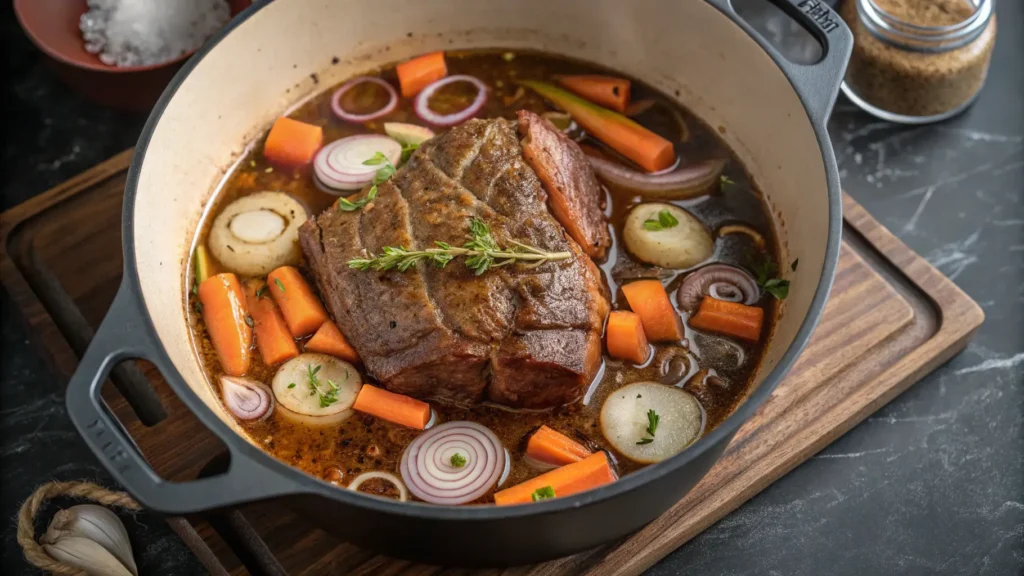
Let’s break it down:
| Method | Cook Time | Flavor Profile | Texture Outcome |
|---|---|---|---|
| Oven-Braising | 3–4 hours | Deep, concentrated flavors | Fork-tender, slightly crispy |
| Crockpot | 6–10 hours | Mild, well-balanced beefy richness | Fall-apart tenderness |
| Instant Pot | 60–90 minutes | Rich but slightly lighter flavor | Moist and shredded easily |
| Sous Vide | 24–36 hours | Intensely beefy and moist | Ultra-tender and uniform |
- Oven-Braised Chuck Roast: A top-tier pick for Sunday dinners or when you want that roasty, caramelized exterior.
- Crockpot Chuck Roast Recipes: Perfect for set-it-and-forget-it days. Just add your ingredients in the morning and enjoy tender beef by dinner.
- Instant Pot Chuck Roast: A lifesaver when you’re short on time. You’ll get similar results to slow cooking in a fraction of the time.
- Sous Vide Chuck Roast: A newer method that gives you restaurant-quality precision and exceptional texture — if you’ve got time to spare.
Pros and Cons of Each Cooking Method
Let’s weigh the pros and cons to help you choose the best approach for your next chuck roast recipe:
Oven-Braising
- Pros: Develops deep, layered flavor with caramelization. Great for browning.
- Cons: Requires oven time and attention; not energy-efficient.
Crockpot (Slow Cooker)
- Pros: Extremely convenient; produces fall-apart tenderness with minimal effort.
- Cons: Less control over browning or crust development.
Instant Pot
- Pros: Fast results; ideal for weeknight dinners.
- Cons: Less time for flavors to fully develop compared to slower methods.
Sous Vide
- Pros: Precise temperature control; unmatched consistency.
- Cons: Time-consuming and requires specialized equipment.
So, what’s the best method? For classic flavor and ease, crockpot chuck roast recipes still reign supreme in most home kitchens.
How to Make Chuck Roast More Tender
Does Chuck Roast Get Tender the Longer It Cooks?
Absolutely — and it’s one of the key reasons why chuck roast recipes are so popular. Unlike leaner cuts that dry out, chuck roast contains collagen and connective tissue. When exposed to slow, moist heat over time, that collagen breaks down into gelatin, creating a luscious texture and deep flavor.
But here’s the catch: cook it too fast or too hot, and it can become tough. That’s why the best chuck roast recipes rely on slow cooking methods that gently break down the meat’s fibers.
Here’s a general rule of thumb:
- Low & Slow = Tender and Juicy
- High Heat & Fast = Tough and Dry
Whether you’re using an oven, crockpot, or Instant Pot, always aim for a low temperature and long cook time for the most melt-in-your-mouth results.
| Cooking Method | Ideal Temp | Minimum Time for Tenderness |
|---|---|---|
| Crockpot | Low (200°F) | 8–10 hours |
| Oven Braising | 300°F | 3.5–4 hours |
| Instant Pot | High Pressure | 60–90 minutes |
| Sous Vide | 135–160°F | 24–36 hours |
Tips to Ensure Melt-in-Your-Mouth Texture Every Time
Want tender chuck roast every single time? Follow these tested tips used by pros and featured in top-rated chuck roast recipes:
- Always use a meat thermometer: Chuck roast is fully tender at an internal temperature of 195–205°F.
- Let it rest: Resting the meat for 15–20 minutes allows juices to redistribute.
- Add enough liquid: Beef broth, red wine, or even cola help create steam and flavor.
- Use acidic ingredients: A splash of vinegar or tomato paste can help break down connective tissue.
- Don’t rush the sear: Browning the meat before slow cooking adds flavor and jumpstarts the cooking process.
Even if you’ve struggled with chewy results before, applying these methods can elevate your chuck roast from basic to brilliant.
Searing Secrets: Should You Sear Chuck Roast Before Slow Cooking?
Why Searing Enhances Flavor and Texture
Ask any chef or home cook who takes their chuck roast recipes seriously, and they’ll tell you — searing is the secret weapon. Searing doesn’t just make the roast look good; it significantly boosts flavor through the Maillard reaction. That’s the fancy term for the browning process that gives meat its rich, complex taste and golden crust.
Here’s why you should sear:
- Locks in Flavor: Browning the outside creates a flavorful crust.
- Adds Depth: You’re building layers of savory beefy goodness.
- Enhances Sauce: The browned bits (fond) left in the pan flavor your broth or gravy.
For best results:
- Pat the roast dry with paper towels.
- Season generously with salt and pepper.
- Use a heavy pan (like cast iron) on medium-high heat.
- Sear each side for 3–4 minutes until a golden crust forms.
Most slow cooker and Dutch oven chuck roast recipes begin with a good sear — and for good reason. It’s a small step that makes a huge difference.
When to Skip the Searing Process
While searing is highly recommended, there are some instances where you might skip it:
- You’re short on time: Mornings can be hectic. Tossing the roast straight into a crockpot still works — it just won’t have the same depth of flavor.
- You’re using the Instant Pot: If pressure cooking, you can sear directly in the same pot to save time (most models have a sauté function).
- You prefer a softer texture: Some people enjoy a stew-like, ultra-tender roast with no crust.
Even if you skip searing once in a while, the rest of your ingredients can still make your chuck roast recipes shine — especially when combined with flavorful broth, aromatics, and time.
How to Add Bold Flavor to Chuck Roast Recipes
Spice Blends, Marinades & Secret Ingredients
The true magic of unforgettable chuck roast recipes lies in the flavor you infuse before and during cooking. While the meat itself is rich and beefy, seasoning takes it to the next level.
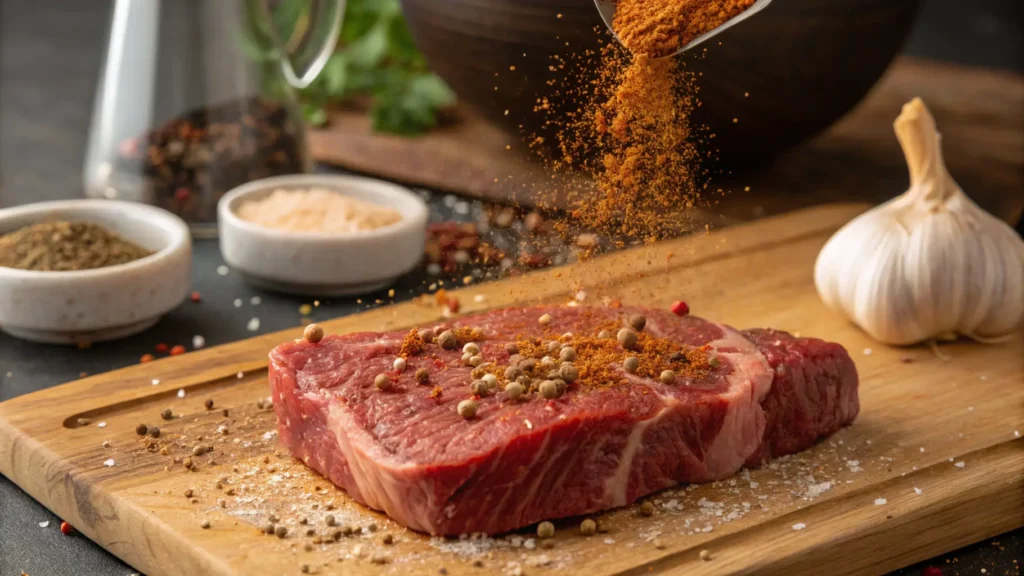
Start with a solid dry rub or wet marinade to build deep flavor into every bite. Here are a few time-tested favorites:
| Flavor Profile | Spice Blend/Marinade Example |
|---|---|
| Classic Herb | Garlic, thyme, rosemary, onion powder, black pepper |
| Smoky BBQ | Paprika, brown sugar, cayenne, cumin, chili powder |
| Mexican-Inspired | Chipotle, oregano, lime, cumin, and coriander |
| Asian-Style | Soy sauce, sesame oil, garlic, ginger, and hoisin |
| Italian Roast | Basil, oregano, balsamic vinegar, tomato paste |
Secret ingredients to amplify flavor in your chuck roast recipes:
- A tablespoon of tomato paste (adds umami and richness)
- Worcestershire sauce (deepens beef flavor)
- A splash of balsamic or apple cider vinegar (adds brightness and tenderizes)
- Coffee or dark beer (adds a robust, earthy note)
- Anchovy paste or fish sauce (just a small amount creates a deep umami background)
Mix and match these elements based on the cuisine or mood you’re aiming for. Chuck roast is like a blank canvas that absorbs flavor beautifully.
Broths, Herbs, and Sauces That Elevate the Roast
Once the roast is cooking, it’s time to think about the liquid base and finishing touches. Don’t just add water — this is your chance to build layers of richness.
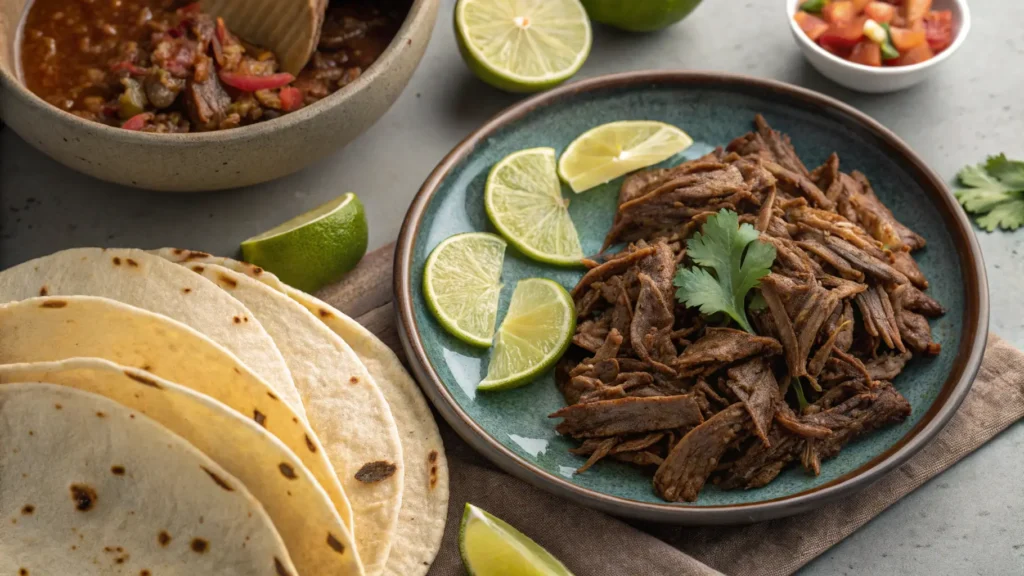
Here are flavorful liquid options perfect for chuck roast recipes:
- Beef broth or bone broth: Rich, meaty base
- Red wine: Adds complexity and depth
- Beer (dark or amber): Pairs beautifully with BBQ-style recipes
- Canned tomatoes: Great for Italian or Mexican-style roasts
- Coconut milk: For a creamy, curry-style twist
Top it off with fresh herbs like thyme, bay leaves, parsley, or rosemary during the last hour of cooking. For extra richness, stir in a touch of butter, cream, or a cornstarch slurry at the end to thicken the sauce.
Flavor isn’t an afterthought — it’s the backbone of all great chuck roast recipes. Even a budget cut can taste gourmet with the right seasonings and cooking liquid.
What Can I Make with Chuck Roast? Delicious Recipe Ideas
Top Chuck Roast Recipe Variations (Tacos, Sandwiches, Stews & More)
Once you’ve mastered a basic roast, the real fun begins — turning it into flavorful meals across different cuisines. Chuck roast is the kind of cut that keeps on giving. One roast can become multiple delicious dishes, saving time and making your weekly meals far more exciting.
Here are some of the best chuck roast recipes you can try:
- Pot Roast with Vegetables: The classic — tender beef with potatoes, carrots, and onions simmered in gravy.
- Birria Tacos: Shredded chuck roast infused with Mexican spices, served in crispy tortillas dipped in consommé.
- BBQ Beef Sliders: Toss the roast in smoky barbecue sauce and serve on mini buns with slaw.
- Beef Stroganoff: Use leftover roast to make a creamy mushroom pasta dish.
- Roast Beef Sandwiches: Thin-slice your roast and layer it with cheese and mustard on crusty bread.
- French Dip: Serve chuck roast with au jus and toasted hoagies for a diner-style classic.
- Beef Chili: Shred the roast into a hearty bean-and-tomato stew with a smoky spice kick.
- Shepherd’s Pie: Layer shredded beef with mashed potatoes and veggies for a comforting bake.
Chuck roast’s ability to shred, slice, or chunk makes it one of the most versatile proteins in your kitchen.
Chuck Roast Meal Prep and Leftovers Ideas
Because it stores and reheats so well, chuck roast is perfect for batch cooking. Use a large roast to meal prep your way through the week without boredom.
Here’s how to stretch one roast into several satisfying meals:
| Day of the Week | Chuck Roast Recipe to Use Leftovers |
|---|---|
| Monday | Pot roast dinner with gravy |
| Tuesday | BBQ beef sandwiches with sweet pickles |
| Wednesday | Tacos with avocado and lime crema |
| Thursday | Beef and veggie stir-fry over rice |
| Friday | Beef quesadillas with melted cheddar |
You can also freeze cooked chuck roast in airtight containers for up to 3 months. Just thaw and reheat for fast dinners when you’re short on time.
Oven vs Crockpot: Which is Better for Chuck Roast?
Cooking Time, Flavor Infusion, and Texture Differences
The debate over the best way to cook chuck roast often boils down to two heavyweights: oven-roasted or crockpot chuck roast recipes. Both methods yield incredible results, but they deliver slightly different flavors and textures.
Let’s break it down:
| Feature | Oven-Baked Chuck Roast | Crockpot Chuck Roast |
|---|---|---|
| Cook Time | 3.5 to 4 hours at 300°F | 8–10 hours on low / 5–6 hours on high |
| Texture | Tender with crispy edges | Extra moist and fall-apart tender |
| Flavor Depth | Rich, roasted, slightly caramelized | Mild, juicy, fully absorbed seasoning |
| Prep Effort | Medium (requires searing, basting) | Very low (set it and forget it) |
| Ideal For | Special dinners, oven meals | Busy schedules, meal prep, family dinners |
Oven-braised chuck roast gives you more of that crusty, golden edge and deeper, roast-like flavor. On the other hand, crockpot recipes let the meat slowly break down into juicy perfection — ideal for shredded beef dishes or when you want to cook without lifting a finger.
Which Method Wins in Real Home Kitchens?
If you’re all about hands-off ease, the slow cooker is the clear winner. It’s reliable, forgiving, and perfect for those busy weekdays when you need dinner ready by the time you walk in the door.
But if you’re aiming to impress with presentation and layered flavor, the oven takes the edge — especially when paired with wine, garlic, and fresh herbs.
Ultimately, both cooking methods are winners in their own right. Most home cooks rotate between the two depending on time, occasion, and recipe.
So, which method should you pick for your next dish? The answer lies in what you value more — caramelized roast flavor or ultra-soft, fall-apart tenderness. Either way, both approaches will elevate your chuck roast recipes and keep your guests coming back for seconds.
Pro Tips for Chuck Roast Success Every Time
Temperature, Tools, and Cooking Hacks
Even the best chuck roast recipes can fall flat without a few key tips. The truth is, chuck roast isn’t difficult — but it does demand attention to detail. A few small adjustments can turn a “good” roast into a melt-in-your-mouth masterpiece.
Here’s how to get it right every single time:
- Use a meat thermometer: Chuck roast is most tender when internal temp hits 195–205°F. Lower than that, and it stays chewy.
- Sear for flavor: Always brown your roast before slow cooking or roasting unless you’re intentionally going stew-style.
- Add acid: A splash of vinegar, lemon juice, or tomato paste helps tenderize and brighten up the flavor.
- Don’t skimp on broth: Moisture matters. Chuck roast needs liquid to break down those tough fibers properly.
- Use a Dutch oven if possible: This heavy-duty pot holds heat evenly and is perfect for oven-braising.
- Layer flavors: Add aromatics like onion, garlic, celery, and fresh herbs during cooking to infuse every bite.
Mistakes to Avoid When Cooking Chuck Roast
Let’s save you from some common chuck roast disasters — and help you master every recipe from now on.
Mistake #1: Rushing the cook time
Chuck roast needs time. Cooking too fast at high heat leads to dry, chewy meat.
Mistake #2: Not seasoning enough
Don’t be shy. This is a thick cut of beef — it can handle (and needs) lots of seasoning for the flavors to penetrate.
Mistake #3: Cooking it dry
Always include enough broth or liquid in your pot or slow cooker. It keeps the meat moist and makes a delicious base for gravy.
Mistake #4: Skipping the rest time
Let your roast rest at least 15 minutes before slicing or shredding. This redistributes juices and improves tenderness.
Mistake #5: Using lean cuts instead
Some people mistakenly swap chuck with leaner cuts like round or sirloin. These just won’t give the same fall-apart result that proper chuck roast recipes are known for.
Master these tips and you’ll never go back to dry, bland roast again.
Conclusion: Make Chuck Roast Recipes the Star of Your Table
If there’s one thing every home cook should have in their back pocket, it’s a collection of go-to chuck roast recipes. This affordable, flavorful cut transforms into something extraordinary when cooked with care — whether you’re going low and slow in a crockpot or building deep flavor in the oven.
From tender pot roasts to BBQ sandwiches, birria tacos, or rich beef stews, the possibilities are endless. You’ve learned the best methods, flavor tips, and how to avoid common mistakes — now it’s your turn to bring it all together.
Looking for more comfort food inspiration? Try our Slow Cooker Cube Steak recipe — it’s packed with the same tenderness and flavor magic you love in chuck roast.
Don’t stop at beef! Discover great ideas like our Venison Steak Recipes for a flavorful twist on wild game, or check out our Smoked Fish Brine recipe to explore bold, slow-cooked seafood options.
Whichever route you take, one thing’s certain: with the right cut, seasoning, and cooking technique, a humble chuck roast can turn into something unforgettable.
FAQs About Chuck Roast Recipes
What is the best method for cooking a chuck roast?
The best method depends on your goal. For maximum tenderness and rich flavor, slow cooking in a crockpot or oven braising is ideal. These methods allow the collagen in the meat to break down slowly, resulting in juicy, fork-tender beef. Many classic chuck roast recipes use low-and-slow cooking with flavorful liquids like broth, red wine, or tomatoes.
If you’re short on time, a pressure cooker like the Instant Pot can also produce tender meat in under 90 minutes. But if you want caramelization and a crusty edge, oven roasting in a Dutch oven is tough to beat.
What can I make with chuck roast?
There’s so much you can do with this versatile cut. Aside from classic pot roast, you can make:
Shredded beef tacos or birria
BBQ beef sandwiches
Hearty beef stews
French dip hoagies
Stroganoff or pasta dishes
Shepherd’s pie with leftover roast
Most chuck roast recipes are great for batch cooking — you can repurpose the same roast into multiple meals throughout the week.
What is chuck roast best for?
Chuck roast is best for slow-cooked dishes where time and moisture transform it from a tough cut into something incredibly tender. It excels in braised recipes, shredded beef dishes, and hearty stews. Its fat and connective tissue break down beautifully, making it perfect for comforting, flavorful meals.
Is it better to cook a chuck roast in the oven or a Crockpot?
Both methods are great — it depends on your needs. If you want rich caramelization and can tend to it during cooking, the oven is a fantastic option. But if you’re looking for a hands-off method that’s virtually foolproof, the crockpot wins.
Most slow cooker chuck roast recipes yield ultra-tender beef with minimal effort — perfect for busy weekdays.
Is it better to sear chuck roast before slow cooking?
Yes, searing is highly recommended. Browning the roast before slow cooking adds a layer of flavor through caramelization. It also improves the overall texture and makes the finished dish more visually appealing. However, if you’re pressed for time, skipping the sear won’t ruin your roast — it just won’t have that deep, savory crust.
Does a chuck roast get more tender the longer it cooks?
Yes — that’s the beauty of it. Unlike lean cuts, chuck roast actually improves with longer cook times. Low temperatures over several hours help the connective tissue dissolve into gelatin, turning the meat moist and tender. Just don’t rush it — the best chuck roast recipes take their time.
How to add flavor to a chuck roast?
Flavor comes from two places: seasoning and liquid. Use a bold dry rub or marinade before cooking. During cooking, choose rich liquids like beef broth, red wine, or tomato-based sauces. Add garlic, onions, herbs, Worcestershire sauce, and spices to build depth.
Pro tip: Let your roast rest in the cooking juices before serving. This locks in flavor and moisture, making every bite better.
Have you given our recipe a try?
There are no reviews yet. Be the first one to write one.
